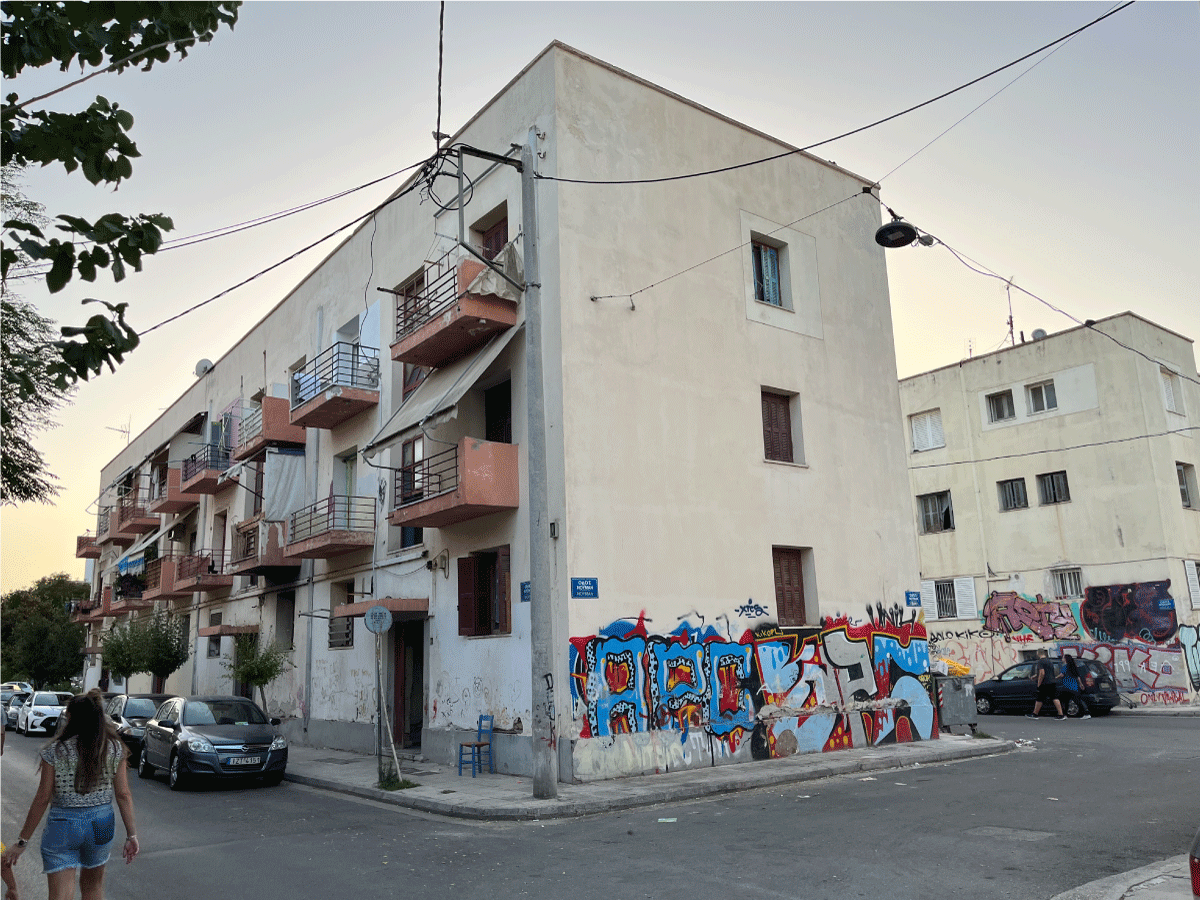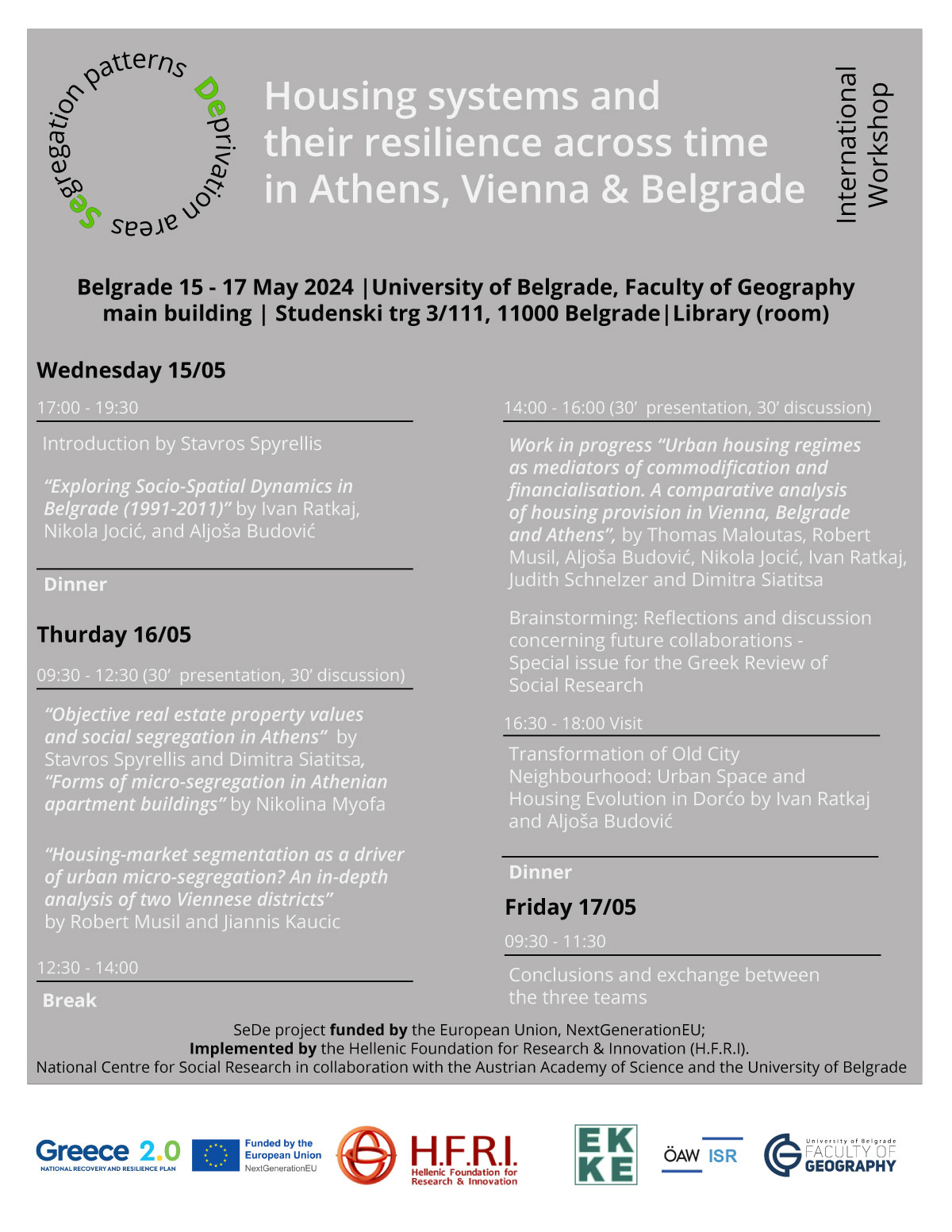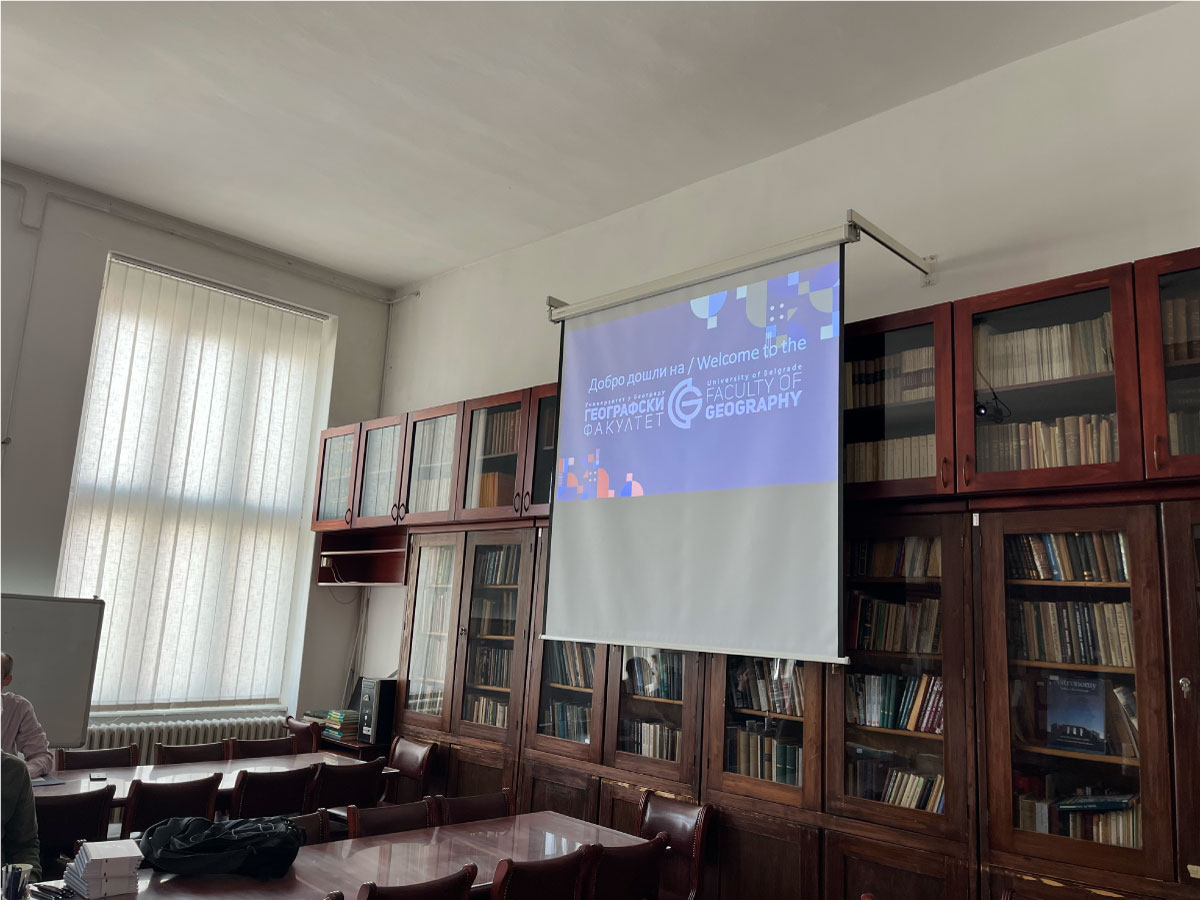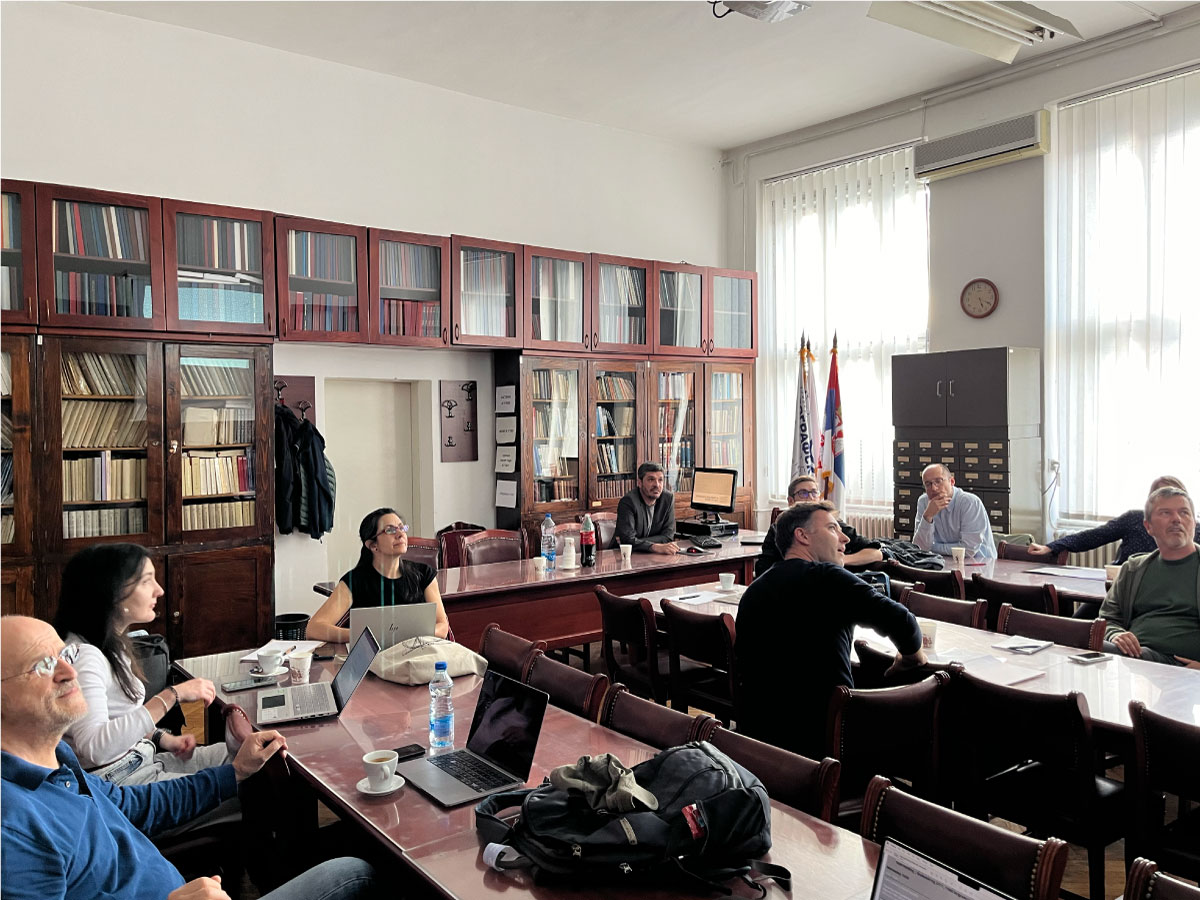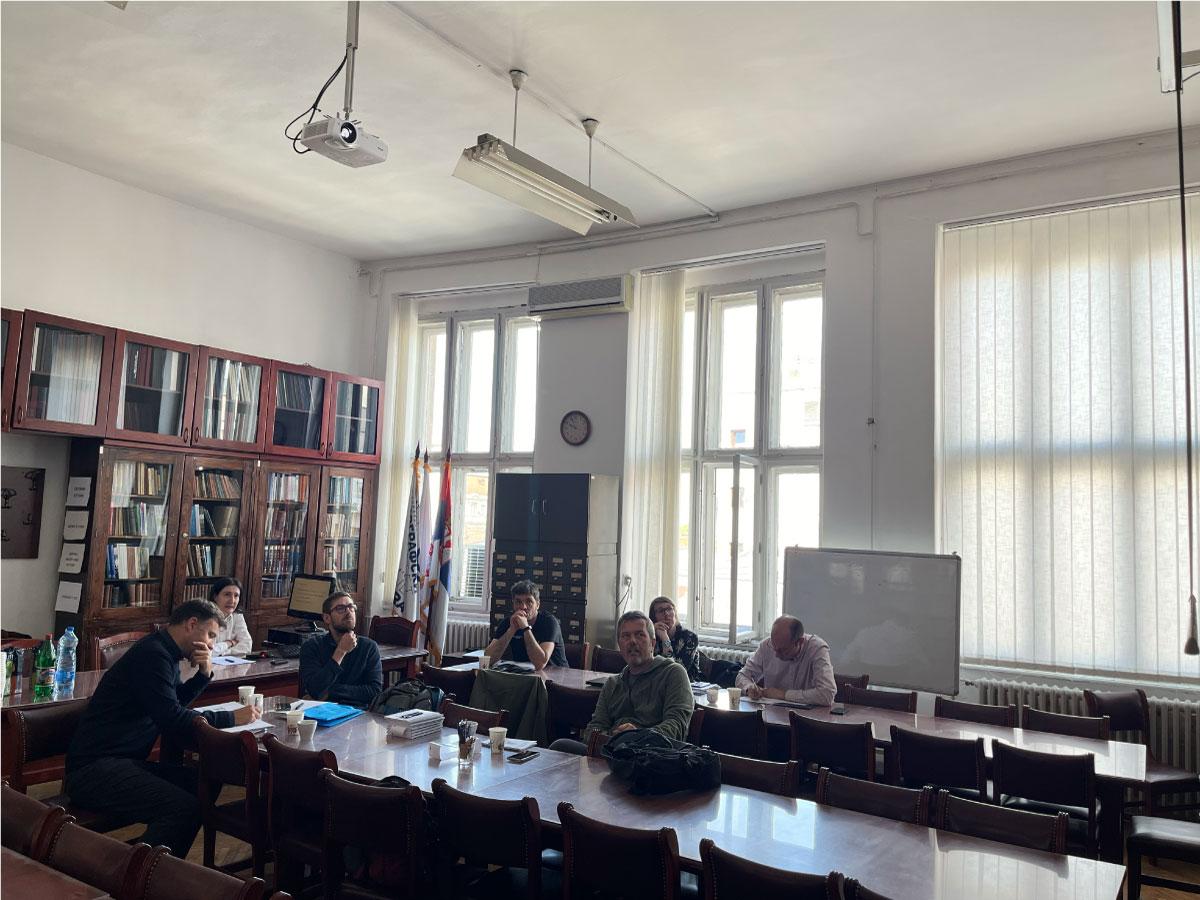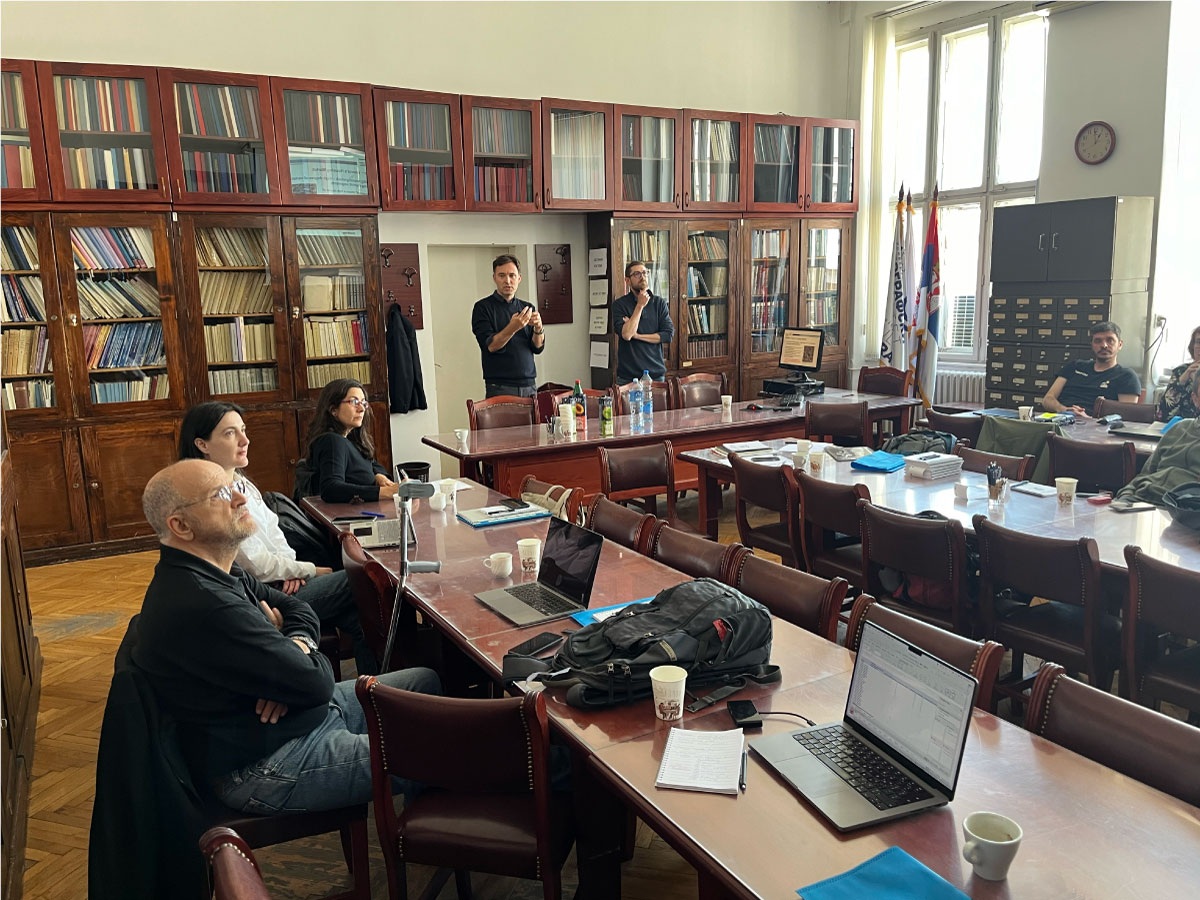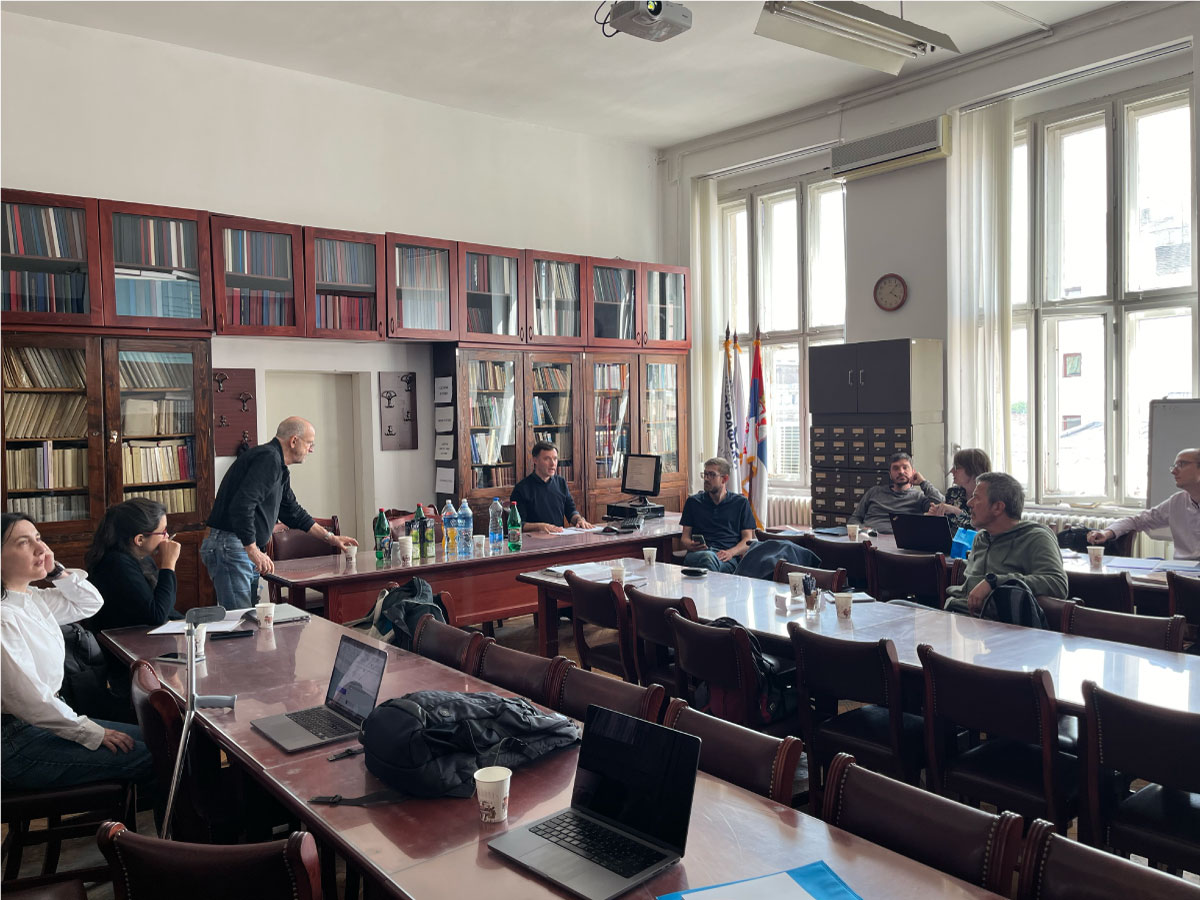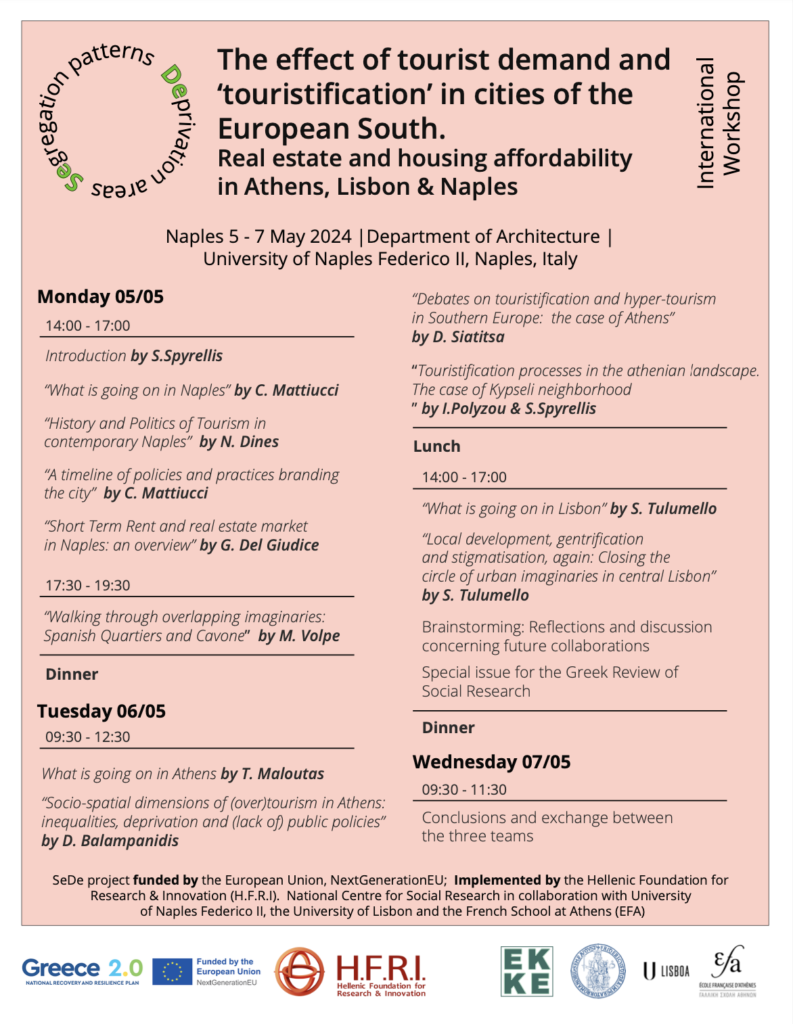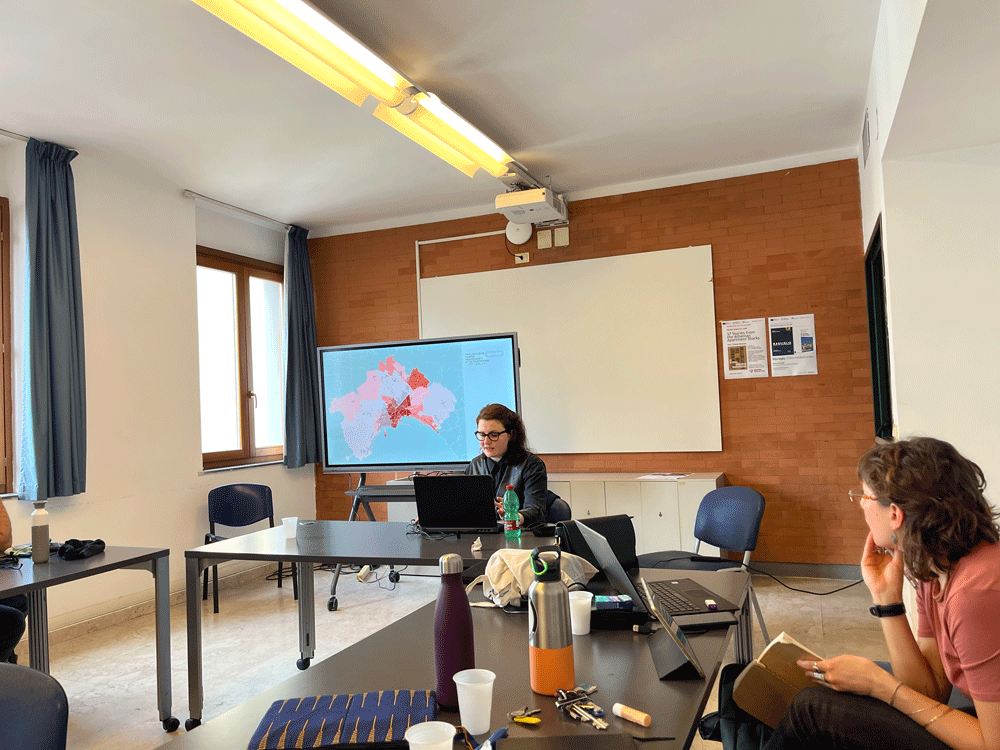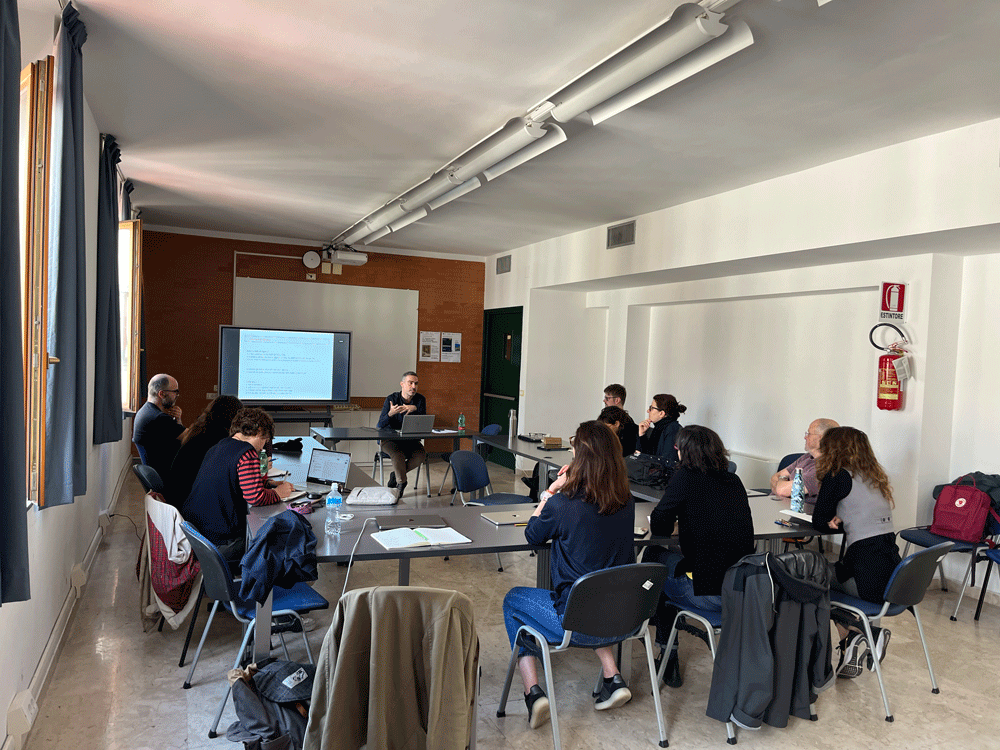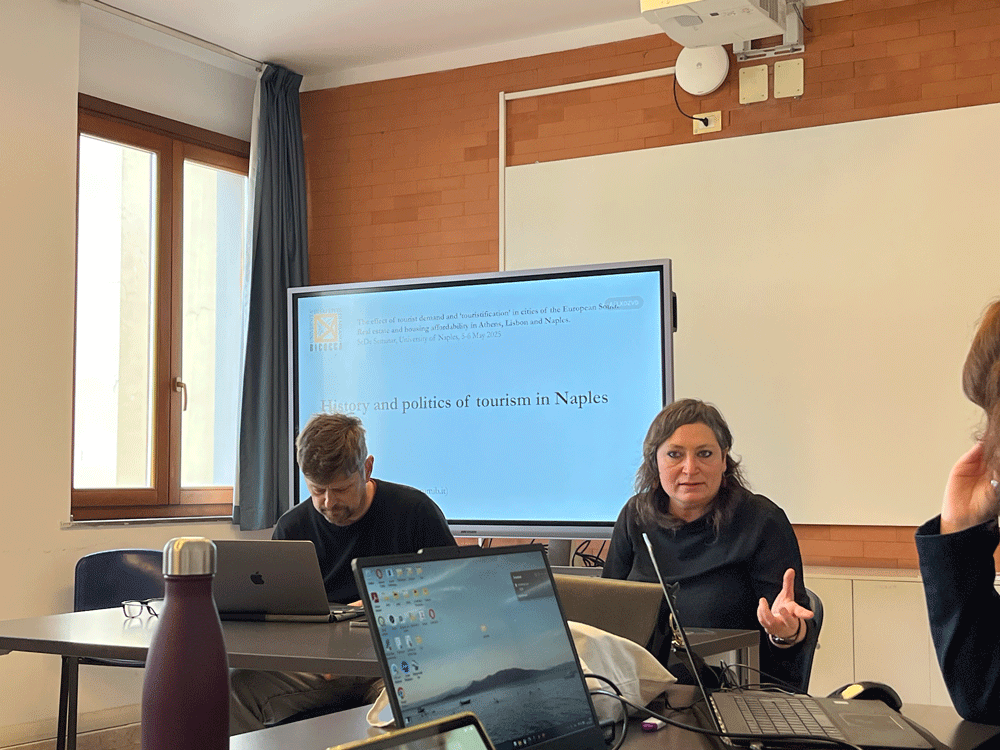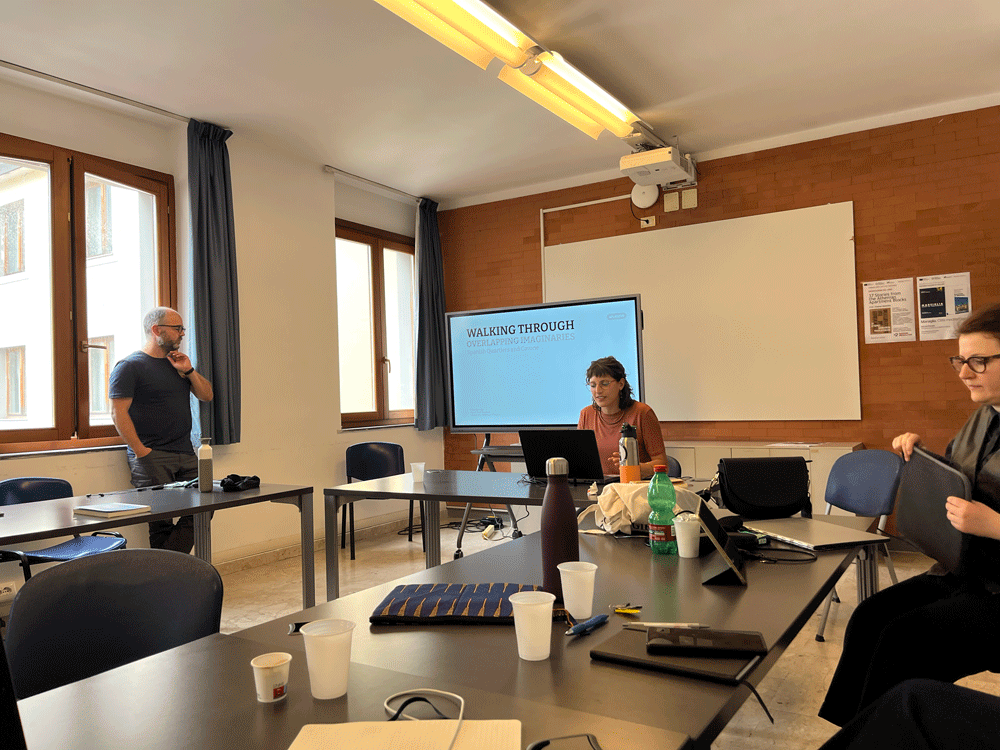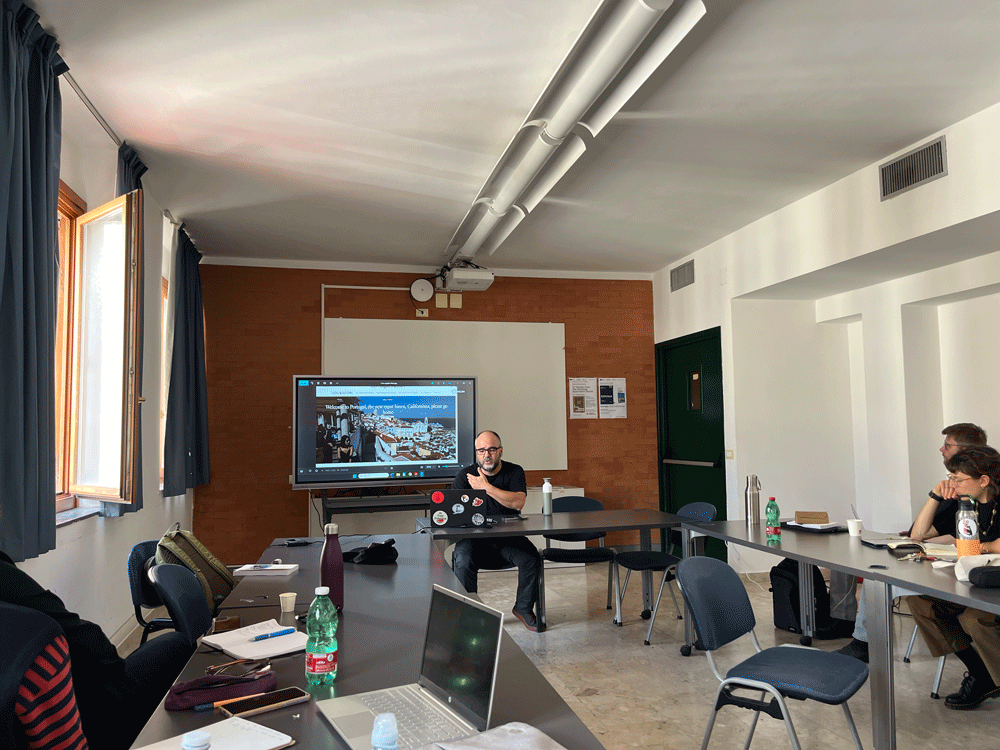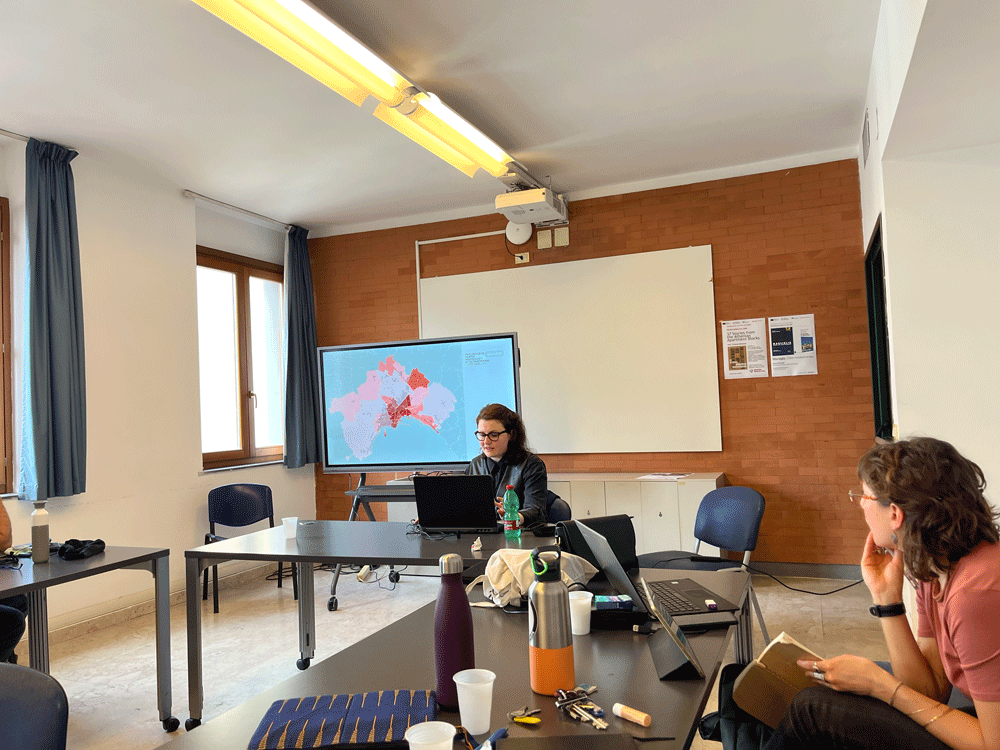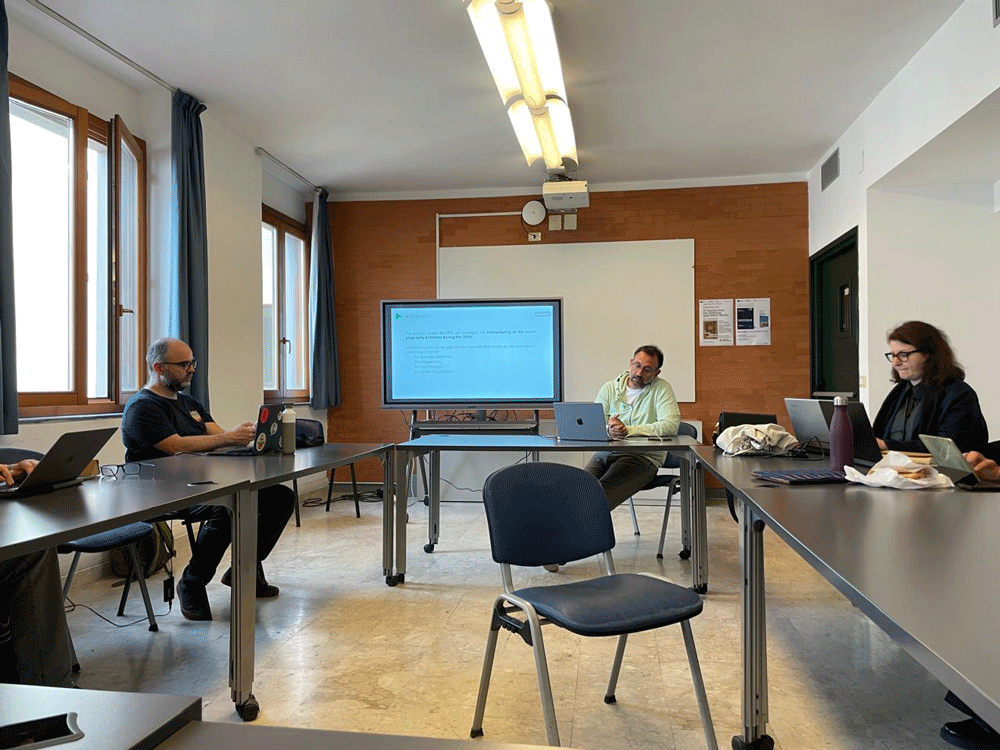Scientific publications
Unregulated Urban Regeneration in Athens: Greening and Taxation of the Built Environment as Impending Levers of Increasing Inequalities
Access to housing in Athens during the first postwar decades protected a broad range of low-means social groups and enhanced their social mobility. Eventually, the city’s housing market was dominated by neoliberal policies, producing a very different social effect. Since the mid-2010s, the changes in the housing market were also interconnected with the rise in demand for housing (some of it related to tourism and other forms of ‘external’ demand for accommodation), the boom in the construction sector, the change in property taxation, the increase in housing prices, and the need to improve built properties.
The analysis of three different datasets in this paper confirmed that the unregulated city’s housing market is following the spatially differentiated demand and reproducing socio-spatial inequalities. It also confirmed that the few policy initiatives developed since the early 2010s have not faced the housing needs of the most vulnerable groups because they were weak and because these needs were not their primary target. Athens seems to be one of the most unregulated cities in Southern Europe, where housing policies are far behind the needs and issues raised by increasing inequalities, and difficulties for vulnerable groups look like unavoidable outcomes.
Maloutas, T., Spyrellis, S.N., Vatavali, F. 2025. “Unregulated Urban Regeneration in Athens: Greening and Taxation of the Built Environment as Impending Levers of Increasing Inequalities”. Land 14 (4):777.
Link: https://doi.org/10.48088/ejg.n.myo.15.4.256.270
Forms of vertical segregation in the contemporary city of Athens
Vertical social segregation as a separation of different social groups in apartment buildings is a phenomenon that mainly appears in the cities of Southern Europe and in some cities of Western and Central Europe. The focus of this paper is the Athenian model of vertical segregation, which shares similarities with the models of other European cities but has its own distinct features. By focusing on the Athenian case, this paper aims to contribute to the broader discussion of segregation at the micro-scale. The study documented here, based on two specific cases, will shed light on the details of the Athenian case. The data were collected within the framework of a recently completed research project on the Municipality of Athens, where vertical segregation is very present.
Therefore, this paper is based on the micro-data of the ISTOPOL project (2020-2022) and on their analysis as part of the SeDe project (2024-2026), both funded by the H.F.R.I. The paper describes the types of micro-segregation existing in two apartment blocks located in different neighbourhoods of the inner city. The main questions addressed were whether these two buildings followed the typical vertical segregation model and whether the structure and the internal design of the specific buildings affected the type of segregation. The study reveals that while the model of vertical segregation is evident in the two case studies, the actual reality is more complex than theoretically expected. The internal design of the buildings has significantly influenced the type of segregation.
Myofa, Nikolina. 2024. “Forms of Vertical Segregation in the Contemporary City of Athens”. European Journal of Geography 15 (4):256-70.
Link: https://doi.org/10.48088/ejg.n.myo.15.4.256.270
Measuring Deprivation and Micro-Segregation in Greek Integrated Sustainable Urban Development Strategies: Time to Apply a Common Method?
During the Programming Period 2014–2020, dozens of Greek cities drafted Integrated Territorial Investment programmes, based on Integrated Sustainable Urban Development Strategies (ITI SUDs). The Strategies justified the selection of intervention and activity areas using socio-economic analysis. The parameters of that analysis, as specified by the National Coordination Authority, reflected the socio-economic and functional parameters highlighted in the relevant EU regulations. This paper uses a recently published methodology in order to estimate and map deprivation in Greek cities with over 100,000 inhabitants, and compares the results with the activity areas identified in the ITI SUDs of those cities.
The paper also makes an estimation of the potential for micro-segregation in deprived areas, in an effort to uncover the links between deprivation, built form and social composition at the micro-scale. The analysis shows that deprivation is comparatively more pronounced in Athens and Thessaloniki, and that the use of a common methodology to measuring deprivation, but with customized measurement scales, could support a more targeted allocation of urban policy resources. On the other hand, micro-segregation seems to be a factor worth exploring only in Athens and Thessaloniki, and not in Patra, Larissa, Volos and Heraklion, where the building stock in areas of deprivation is mostly low-rise.
Karadimitriou, N. & Spyrellis, S.N. (2024), ‘Measuring Deprivation and Micro-Segregation in Greek Integrated Sustainable Urban Development Strategies: Time to Apply a Common Method?’, Land, 13 (4), 552.
Link: https://doi.org/10.3390/land13040552
Exploring Spatial Proximity and Social Exclusion through Two Case Studies of Roma Settlements in Greece
Roma groups in Greece are a long-standing socially deprived population that faces extreme social exclusion and segregation. Their marginalization includes limited access to education, employment, and housing. This paper explores their spatial position and social exclusion, comparing the social profile and life conditions in two case studies of Roma settlements with those of the municipal and regional units to which they belong. Methodologically, we analyze quantitative data from the 2011 Population Census to measure life conditions at three levels (settlement, municipal unit, regional unit), and we also use qualitative data from interviews with representatives of local agencies and residents of the two settlements to
document our hypotheses on the causal relations between the spatial position and the social exclusion of Roma groups. The comparison shows that the two Roma settlements are clearly different from their entourage, assembling the lowest positions in the labor market, the weakest performances in education, the largest households, and the worst housing conditions. This case of extreme social exclusion in ghettoized spatial proximity raises the question about the significance of micro-segregation and the way it works in different contexts, as well as the need for further research for a more comprehensive understanding of the relation between social inequality and spatial distance.
Maloutas, T., Frangopoulos, Y., Makridou, A., Kostaki, E., Kourkouridis, D. & Spyrellis, S.N. (2024), ‘Exploring Spatial Proximity and Social Exclusion through Two Case Studies of Roma Settlements in Greece’, Land, 13 (2), 202.
Link: https://doi.org/10.3390/land13020202
The role of vertical segregation in urban social processes
It is common knowledge that urban neighborhoods have diverse and unequal social profiles, and this makes a difference for the life prospects of their residents. We know much less about social separation and hierarchies within neighborhoods (micro-segregation), that is, in the micro scale of city blocks and apartment buildings.
Vertical segregation is a form of micro-segregation embodied by positions of advantage or disadvantage according to the floor of residence. Is vertical segregation exceptional or can we locate it in many different cities? Does it make a difference for the life prospects of urbanites if they live in the advantaged or disadvantaged parts of such micro-segregated spaces?
Maloutas, T. (2024), ‘The role of vertical segregation in urban social processes’, Nature Cities, 1, 185-193.
Link: https://doi.org/10.1038/s44284-024-00037-5
Athens. A Rapidly Changing Metropolis in the European South
The book tackles core issues of the SeDe project. T. Maloutas, the book’s editor, is member of the research team, while other members participate as editors or co-editors (I. Polyzou, N. Karadimitriou, S. Spyrellis) of several chapters.
In more detail, it looks at the current trends in Athens, the capital city of Greece, and focuses on the processes of globalization it has been undergoing during the last two decades. In this time the city has transformed from a low-key, petty bourgeois cohesive and rather isolated city in south-eastern Europe to an internationally visible metropolis, increasingly unequal and polarized.
The book mainly deals with changes in the social structure and the ways that different groups are linked to the city’s built environment. The main issues discussed in the book include the economic identity and the position of Athens in the regional and global urban networks; the reproduction of class and ethnic boundaries and the uneven distribution of different social groups in urban space; the exploration of political processes related to the class vote, including the gender and demographic profile of the city’s electorate; the making of the built environment, the main trends in real estate and the ways they affect the housing market.
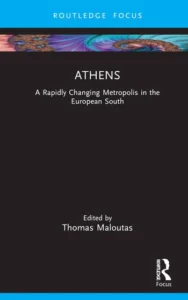
Athens is not abundantly discussed in the urban studies literature, even though social and spatial changes have been remarkable. As such, this book provides a concise overview of the main socioeconomic and spatial changes in Athens during the last two decades and their significance beyond the case of Athens.
This book will be of interest to researchers and students of the built environment, urban studies and urban sociology.
Maloutas, T. (ed) 2024. Athens: A Rapidly Changing Metropolis in the European South, Routledge, Oxon UK and New York NY, USA, p. 130
Link: Routledge, Athens
DOI: 10.4324/978132659848
Athens. A Rapidly Changing Metropolis in the European South
Seeing Athens from above, one revels in its most characteristic view: a ‘sea’ of apartment buildings. The ‘polykatoikia,’ a key component of Athens’ contemporary history and current structure, emerged from post-war urbanization as a reconstruction model, providing wider social strata with the opportunity to rebuild the city, building by building. These processes have long become a subject of public discussion, as well-established myths around those “who destroyed Athens” have allowed a perceived divide between the agents of ‘antiparochi’ and ‘polykatoikia’ and the city’s present-day residents.
As an effort to entwine these two worlds, the book, on the one hand, profiles stories from within—narratives that trace what took and still takes place in the interior of the Athenian polykatoikia—and, on the other hand, tracks grassroots tales of the city, namely narrations around the people who built, passed through, inhabited, and still inhabit the city.

The interpolating stories and theoretical texts are not necessarily read in the book’s intended order but rather in a ‘free-floating’ manner on the reader’s part. Recounts, memories, personal experiences, photographs, diagrams, building codes, contracts, and operating regulations all together trace the histories of people and buildings, while at the same time charting composite processes that transpire across the scale of the neighborhood and the Athenian society at large.
Maloutas, T., Myofa, N., Balampanidis, D., & Dimitrakou, I. (eds.) (2024) 37 stories of athenian apartment blocks. Athens: Onassis Foundation Publications (in Greek).
Link: Onassis Foundation Publications
Occupational categories: changing social profiles and spatial patterns in the city
This chapter describes the occupational structure of Athens and the changes observed since the 1950s and mainly since the 1990s. The main change during this period is the transformation of the pyramidal occupational structure, with a thin top and a large bottom, to a polarized shape following the increase of higher and, to a lesser extent, intermediate occupational categories and the decrease of lower ones. This broad change cannot be easily summarized as increased or decreased inequality between top and bottom of the occupational ladder. It has rather brought segmentation and increased inequalities among the higher occupational categories. These changes in the occupational structure were accompanied by changes in the residential patterns of the main
occupational categories that also followed complex forms. Residential patterns of occupational categories have been changing and are reproduced following the changes in the different urban milieus produced by housing systems, building activity and the residential location choices of unequal and diverse population groups in the city’s housing market. These residential patterns should be examined not only at the neighbourhood level. The level of micro-segregation is significant in Athens, with the important presence of vertical social and ethnic segregation within the city’s apartment blocks in the central neighbourhoods.
Today, the transformations in residential patterns are accelerated and mainly induced by new developments in the city’s real estate market and by the transformation of housing from a use value to an investment product.
Maloutas, T. & Spyrellis S.N. (2024), Occupational categories: changing social profiles and spatial patterns in the city, in Thomas Maloutas (ed), Athens: A Rapidly Changing Metropolis in the European South, Routledge, Oxon UK and New York NY, USA, p. 130
Link: Occupational categories
Between coexistence and marginality: migrants and socio-spatial change
This chapter focuses on the interconnections between recent migration and sociospatial change in Athens. It discusses how migrants settle and create new urban social dynamics and how the urban space is reconfigured by and through migrants’ settlement. We summarize international mobilities in the metropolitan area of Athens from the 1990s until today by highlighting migrants’ self-
settlement practices, asylum accommodation at the margins, and the spatial implications of a prevailing racialized social system. We argue that migrants’ habitation in the city has been determined, on the one hand, by simultaneous yet open and dynamic processes of social coexistence and spatial proximity and, on the other, by marginality and exclusion.
Kandylis, G., Papatzani, E., & Polyzou, I. (2024), Between coexistence and marginality: migrants and socio-spatial change, in Thomas Maloutas (ed), Athens: A Rapidly Changing Metropolis in the European South, Routledge, Oxon UK and New York NY, USA, p. 130
Link: Between coexistence and marginality
The transformations of Athens’ housing market
This chapter discusses the structural transformation of housing provision in Athens since the 2008 public debt crisis. After a collapse in supply during the 2010s, housing production never really picked up significantly. Investment in housing development is attracting around 1/6 of the capital flows it used to before the crisis. This is largely due to the drop in income and savings of Greek households and the tax regime and institutional issues which make long-term asset ownership and long-term rental unattractive.
The combination of low supply with growing foreign direct investment in residential real estate which is attracted by the significant short-term rental and capital appreciation opportunities has propped up housing prices and rents significantly. This conundrum has led to a brewing affordability crisis. It is still early to say what impact recent measures aimed at supporting households to access owner-occupation had. However, given the causes of the current affordability issues in Athens, a significant increase in the supply of housing for owner-occupation and (social) rental might be needed.
Karadimitriou, N. (2024), The transformations of Athens’ housing market, in Thomas Maloutas (ed), Athens: A Rapidly Changing Metropolis in the European South, Routledge, Oxon UK and New York NY, USA, p. 130
Link: Routledge, Athens
Des métropoles-refuges
The labor immigration which has characterized Southern Europe since the 1980s is primarily oriented towards large cities and the tertiary sector. Its diversity, its significant rate of feminization, its presence in numerous sectors of the labor market modifies the social geography of contemporary metropolises. At the end of the 2000s, the migratory landscape in most southern European cities underwent profound transformations. Migration mobilities undergoes a double process, quite contradictory in certain aspects.
On the one hand, the countries of southern Europe remain open to European citizens and citizens from neighboring countries. On the other hand, they show an increasingly closed response towards other groups. These are the paradoxes of a double standard migratory model which filters and encourages the installation and movement of some while preventing the arrival and legalization of others. Indeed, it is the positioning of metropolises and metropolitan actors in this context of migration crisis that will be discussed in this chapter.
Schmoll, C., Polyzou, I., Piva A., del Biaggio,C., Lafazani, O., (2024), Des métropoles-refuges, in D. Riviere (ed) Les métropoles d’Europe du Sud à l’épreuve des crises du XXIe siècle, École française de Rome, Rome, Italy, p.p. 273-305
Link: Les métropoles de l’Europe du Sud
Logement et crise en Europe du Sud : une marchandisation méditerranéenne ?
While the bursting of the speculative bubble in the property markets in 2008 could have slow down on the dynamics of financialization, almost fifteen years la- ter, housing is still one of the most prized commodities. This chapter describes how the commodification of housing has operated over time in Southern Europe. After a brief period of falling property prices, the recomposition of investment logics led to an
acceleration of touristification in numerous metropolises such as Lisbon, Bar- celona and Athens. The particularly strong intensity of the phenomenon, especially as regards short-term rentals, is analyzed in relation to the combination of socie- ties, states and markets, including the strong prevalence of property as insurance against crises and the importance of neoliberal employment and urban policies.
Delon, M., Maloutas, T., Semi, G., Buil, D.M., Tonetta, M.,(2024), Logement et crise en Europe du Sud : une marchandisation méditerranéenne ?, in D. Riviere (ed) Les métropoles d’Europe du Sud à l’épreuve des crises du XXIe siècle, École française de Rome, Rome, Italy, p.p. 273-305
Link: Les métropoles de l’Europe du Sud
• Balampanidis, D. (01.11.2024) Tourism, AirBnB and urban space: Inequalities, deprivation and public planning. Invited speaker at the Association of Architects (SADAS, Department of Attica), Athens, Greece.
• Maloutas, T. (05.2024) Housing affordability in Athens under changing conditions. The impact of the crisis and its aftermath. Post-graduate group of University of Nijmegen, Athens, Greece.
• Maloutas, T. (09.2024) Urban micro-segregation. Invited lecture –PSTC Colloquia lecture– at Brown University (Providence, RI).
• Maloutas, T. (10.2024) The social geography of Athens. Post-graduate group, Department of Architecture, Politecnico di Milano (online).
• Myofa, N. (27.05.2024) The housing issue in Athens and the study of vertical social segregation. Presentation at Harokopio University, Undergraduate course: Social Geography, Kallithea, Greece
• Polyzou, I. (21.10.2024) Migration and the urban space. Negotiations of borders, coexistences and micro-segregations (with Timoklia Psalidaki), National Technical University of Athens, Athens, Greece.
Events
Housing systems and their resilience across time in Athens, Vienna and Belgrade
1st SeDe International Workshop, Belgrade 15 – 17 May 2024, University of Belgrade, Faculty of Geography
The SeDe project comprises a rich network of international collaboration with teams working on similar issues in comparable cities. The aim of this International Workshop in Belgrade is to propose an comparison using three different housing systems, in Athens, Vienna and Belgrade, and their resilience across time. The event seek to provide an ongoing mirroring of the Athenian case, vis à vis centrer-eastern European urban contexts.
Housing stories in the Balkans and Central Europe will provide a comparative analysis of access to housing and social mix in the housing stock produced during the early postwar decades to provide very different housing solutions in Athens, Vienna and Belgrade.
The effect of tourist demand and “touristification” in cities of the Eurorean South. Real estate and housing affordability in Athens, Lisbon & Naples
2nd SeDe International Workshop, Naples 5 – 7 Naples 2025, University of Naples Federico II, Department of Architecture
The aim of the 2nd SeDe International Workshop in Naples is to compare the Athenian case with two most-similar Southern European cities like Lisbon and Naples.
The event seek to question the effects of tourist demand and ‘touristification’ in cities of the European South. A comparative analysis of trends in the real estate markets and on housing affordability in Athens, Lisbon and Naples
Specific policies, addressing common urban trends such as touristification, housing (un)affordability, and urban vulnerability will be discussed and assessed in relation to their transferability through different contexts.
Participants
- Dimitris Balampanidis, EKKE (SeDe team)
- Gaia Del Giuduce, University of Naples
- Nick Dines, University of Milano Bicocca
- Thomas Maloutas, EKKE/ HUA (SeDe team)
- Christina Mattiucci, University of Naples, Department of Architecture
- Iris Polyzou, NTUA/EKKE (SeDe team)
- Simone Tulumello, University of Lisbon
- Dimitra Siatitsa, EKKE/NTUA (SeDe team)
- Stavros Spyrellis, EKKE (SeDe team)
- Marina Volpe, University of Naples
Urban Housing in Central and Southeastern Europe Summer School September 2024
International Summer School, 23rd September – 3rd October 2024 – Vienna, Belgrade, Athens.
The Summer School is linked to the WP3 of the SeDe project seeking to question the housing systems and their resilience across time in Athens, Vienna & Belgrade. T. Maloutas and S. Spyrellis were members of the organisation team.
In detail, the Summer School focuses on recent developments in urban housing markets: how do financialisation, economic crisis and austerity policies impinge upon housing provision? How do these forces translate into patterns of sub-/re-urbanisation, segregation and gentrification? Against the backdrop of these general questions, the Summer School enquires into the conditions that frame housing markets, showing a strong variation amongst European cities.
The Summer School focuses on the housing markets in three European metropolises, which are characterised by different historic pathways and market structures, and which are embedded in different regulative frames and policies. Vienna is dominated by a rental market with strong regulations and by a large social housing submarket. In contrast, Belgrade displays a radical transformation towards a ownership market with weak regulations. Finally, the Greek capital Athens was highly affected during the Euro-crisis, with implications for the housing market.








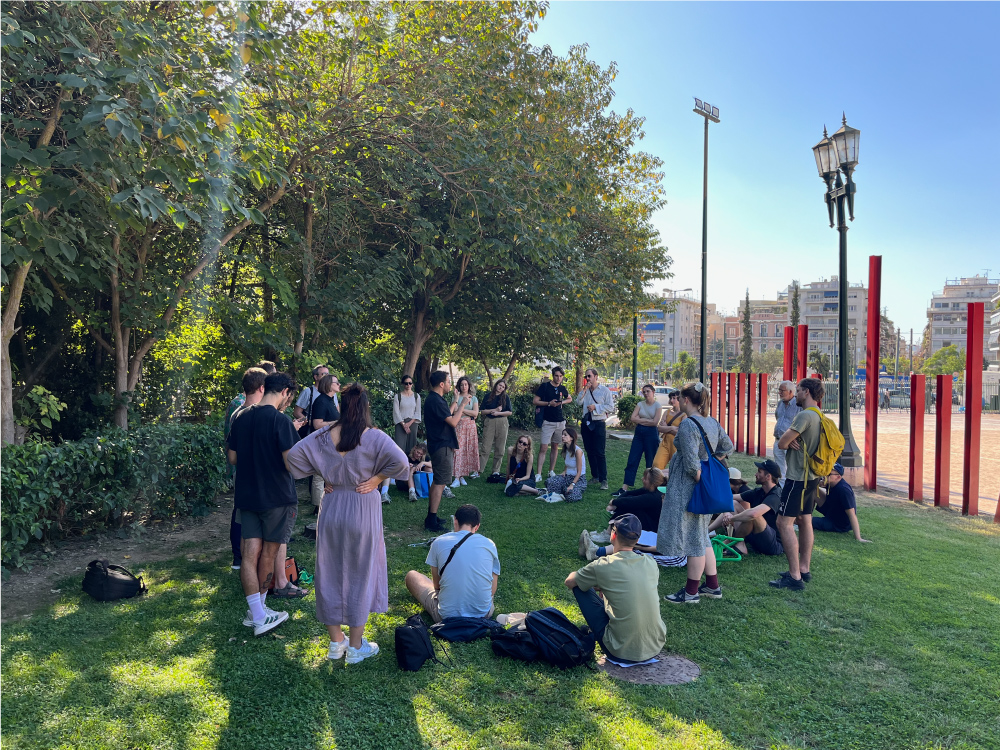

Schedule of the Summer School
The summer school comprises a three day-course in each city, with lectures in the morning and field trips or visits of practitioners in the afternoon.
Vienna program, Belgrade program, Athens program
Presentations by members of the SeDe team:
- The city’s social geography by T. Maloutas
- Housing conditions and politics of housing by D. Siatitsa
- Forms of micro-segregation in Athenian apartment buildings by N. Myofa
- Mapping residential segregation forms in Athens by S. Spyrellis
- Urban Poverty in Athens by I. Polyzou
Lectures
Spyrellis SN (2024), Dynamic tools for the Urban Geographic Analysis, presentation at The University of Crete Research Center (UCRS) Scientific Workshop, Rethymno, Greece, 9 October 2024
Spyrellis SN (2024), Urban planning and crisis or urban planning in crisis… social segregation and deprivation in urban space, Theories and policies for the contemporary city, NTUA School of Architecture, Department of Urban and Regional Planning, Athens, Greece, 2 December 2024
Spyrellis SN (2025), La géographie sociale d’Athènes, in postgraduate seminars under the title Mutations socio-démographiques et urbanisme dans les métropoles contemporaines, as invited scholar at the EHESS in Paris, France, 5 February, 2025
Spyrellis SN (2025), Les quartiers défavorisées dans une capitale sud-européenne, in postgraduate seminars under the title Mobilités : une géographie morale et politique, as invited scholar at the EHESS in Paris, France, 7 February, 2025
Spyrellis SN (2025), Measuring and mapping vertical segregation in Athens, in postgraduate seminars under the title Villes et territoires : perspectives pluridisciplinaires et transnationales, as invited scholar at the EHESS in Paris, France, 10 February, 2025
Spyrellis SN (2025), Socioeconomic differentiations and vertical segregation at the micro-scale in Athens, in the seminars of the Fondation Hellenique of the Cité Internationale Univeritaire de Paris in Paris, France, 26 February, 2025
